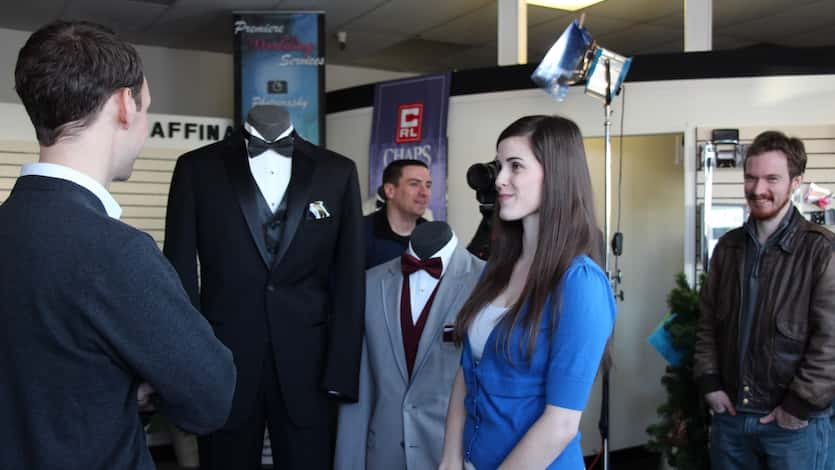Once the script for a commercial is approved, pre-production can begin in earnest, which involves hiring the right crew for the project, securing locations, auditioning talent, and figuring out equipment needs. On a small commercial production where budget is a concern, we don’t have the resources to bring aboard an experienced production manager, which means I am wearing several hats: writer-director-producer. I have the experience to create budgets for projects, know where to rent gear, obtain proper insurance paperwork, and ready contracts for cast / crew. As producer, I spent a few dozen hours just putting together the project and trying to find a date that works for everyone.
As director, my job doesn’t stop, either, because I need to location scout where we are shooting, speak with my actors about the job, coordinate with my 1st Assistant Director about scheduling, and talk with my cinematographer about my vision. The discussions with my cinematographer and 1st AD are most important in the planning phases because we knew we needed to shoot the commercial in a day, but at two locations. Because of the limited time frame, my cinematographer recommended using the Canon 1DX Mark II for its high quality and autofocus features for moving shots. The discussion of my vision for the spot dictated who needed to be part of the camera department and electrical department for the shoot.
By the time we reached the production date, I had already logged nearly 100 hours of creative time on the project with a 12-hour shoot ahead as director. On set, the creative decisions made need to be the right ones, specifically camera angles chosen, directing the actors to capture the moment in the way I envisioned, and shooting enough coverage to make sure we could cut both a 30 second and 60 second spot. One of the critical “must get right” elements is making sure to time the takes, or film alternate speed takes, so that you don’t get into the editing suite and realize there’s no way to make a shot work because it’s simply too long. Directing experience and general filmmaking knowledge are required to produce creative spots that work not just on the page but when the commercial is finished.
When all gear returns are completed, a job that would fall to a production assistant or other coordinator on a larger shoot, and all data transferred and backed up, the editing process can begin. As a director, I like to provide a good deal of feedback to my editor before post-production. On an agency spot, directors rarely have much input into editing, but on our shoots I find that it’s helpful to make sure my creative vision — and the one the client signed off on making — is executed as intended. I reviewed a bunch of the footage we shot, then came up with my preferred “best takes” for each line and how I imagined them cutting together. Of course, our editor is highly creative and I wanted to give him a chance to play with the footage as well, but directors tend to edit the footage in their minds on set and I like the finished version to be close to how I imagined it.
In post-production, I would estimate spending somewhere around 15 hours giving feedback, notes, and going over cuts again and again to arrive at the finished video. A lot of the process is watching and rewatching the commercial to make sure even the smallest touches, audio details, and cuts are exactly as intended down to the last frame. With only 30 or 60 seconds, each frame is important. In all, a production like Mr. Formal’s Portland commercial can take between 100 and 150 hours of creative time. Compare a high-end commercial shoot to something like a straight-forward corporate interview / B-roll piece and you can understand why the cost is exponentially higher.
In all, I’ve spent hundreds of thousands of dollars on my own projects, honing my directing skills and creative talents, and ten years of my life. Suffice to say, no director worth hiring should be working for under $100/hour, especially because that’s roughly the going rate of most videographers as well.

